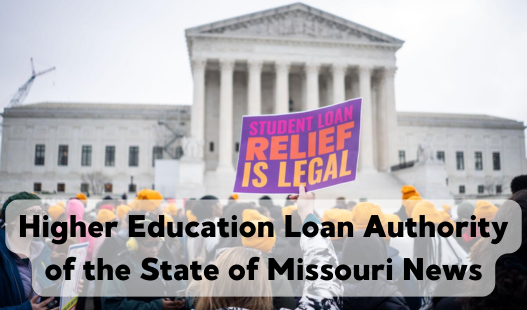Navigating the complexities of student loans can be challenging, especially when considering specific programs like those offered by the Missouri Higher Education Loan Authority (MOHELA). This article will break down the essentials of Missouri student loans, how MOHELA plays a role, and what students in Missouri need to know to make informed financial decisions for their education.
What Are Missouri Student Loans?
Missouri student loans are financial aid options designed to help students cover the cost of higher education. These loans can come from federal, state, or private sources and are used to pay for tuition, books, and living expenses. Missouri residents can benefit from specific loan programs that are tailored to meet the needs of students in the state.
The Role of the Missouri Higher Education Loan Authority (MOHELA)
The Missouri Higher Education Loan Authority, commonly known as MOHELA, is a state-created organization that plays a significant role in managing and servicing student loans. Established in 1981, MOHELA’s mission is to help students access higher education by providing loans and supporting loan repayment processes. MOHELA services federal student loans, meaning they manage the billing and other services related to your loan once it has been disbursed.
Key Functions of MOHELA
- Loan Servicing: MOHELA is responsible for managing the repayment of student loans. This includes processing payments, providing customer service, and offering repayment plans to borrowers.
- Repayment Assistance: MOHELA offers several repayment options and assistance programs. These can include income-driven repayment plans, deferment, forbearance, and loan forgiveness programs, depending on the borrower’s situation.
- Educational Resources: MOHELA also provides financial literacy resources to help borrowers understand their loans, manage their finances, and make informed decisions about repayment.
Types of Missouri Student Loans
Missouri students have access to a variety of loan options, including federal, state, and private loans. Each type of loan comes with its own set of terms, conditions, and benefits.
Federal Student Loans
Federal student loans are typically the first choice for students due to their favorable terms, including lower interest rates and flexible repayment options. Common types of federal loans include:
- Direct Subsidized Loans: Available to undergraduate students with financial need, the government pays the interest on these loans while the student is in school.
- Direct Unsubsidized Loans: Available to both undergraduate and graduate students, these loans do not require financial need, but interest accrues while the student is in school.
- PLUS Loans: Available to graduate students and parents of dependent undergraduates, these loans help cover the remaining costs of education after other financial aid has been applied.
State-Specific Loans
In addition to federal loans, Missouri students may be eligible for state-specific loan programs. These loans can offer competitive interest rates and terms that are tailored to Missouri residents.
Private Student Loans
Private student loans are offered by banks, credit unions, and other private lenders. These loans can help cover costs not met by federal or state loans but often come with higher interest rates and fewer repayment options.
Repayment Options and Assistance
Understanding your repayment options is crucial to managing student loan debt effectively. MOHELA offers various repayment plans that can be tailored to your financial situation.
Standard Repayment Plan
This plan involves fixed payments over a period of 10 years. It’s the default repayment plan, but it may not be the best option for everyone.
Income-Driven Repayment Plans
These plans adjust your monthly payment based on your income and family size. They can be a good option for borrowers who may struggle to make standard payments.
Loan Forgiveness Programs
Missouri residents working in public service or certain professions may qualify for loan forgiveness programs, where a portion of their loan balance is forgiven after meeting specific criteria.
Conclusion
Navigating Missouri student loans and understanding the role of the Missouri Higher Education Loan Authority (MOHELA) is essential for any student looking to finance their education. By exploring all available options, including federal, state, and private loans, and by taking advantage of MOHELA’s resources, students can make informed decisions that set them on the path to successful loan repayment and financial stability.
Faqs
1. How to get a student loan in Missouri?
To get a student loan in Missouri, you need to start by completing the FAFSA (Free Application for Federal Student Aid), which determines your eligibility for federal loans. For private loans, you will need to apply directly with a bank, credit union, or other private lenders. Missouri students can also explore state-specific grants and scholarships that reduce the need for loans.
2. What are the 3 characteristics of a student loan?
- Fixed or Variable Interest Rates: Federal loans typically have fixed rates, while private loans can have either fixed or variable rates.
- Repayment Flexibility: Federal loans offer various repayment plans, including income-driven repayment options, while private loans have less flexibility.
- Loan Forgiveness Options: Federal loans may qualify for forgiveness programs such as Public Service Loan Forgiveness (PSLF), whereas private loans usually do not offer forgiveness.
3. How many years does it take to pay off student loans?
On average, it takes 10 to 30 years to pay off student loans, depending on the loan type and the repayment plan. Federal loans typically have a standard repayment term of 10 years, though income-driven repayment plans can extend the term to 20-25 years.
4. What is the average student debt after 4 years?
The average student debt after 4 years of undergraduate study in the U.S. is about $30,000. However, this can vary by institution and state, with some students accumulating more or less debt depending on the cost of attendance and financial aid received.

